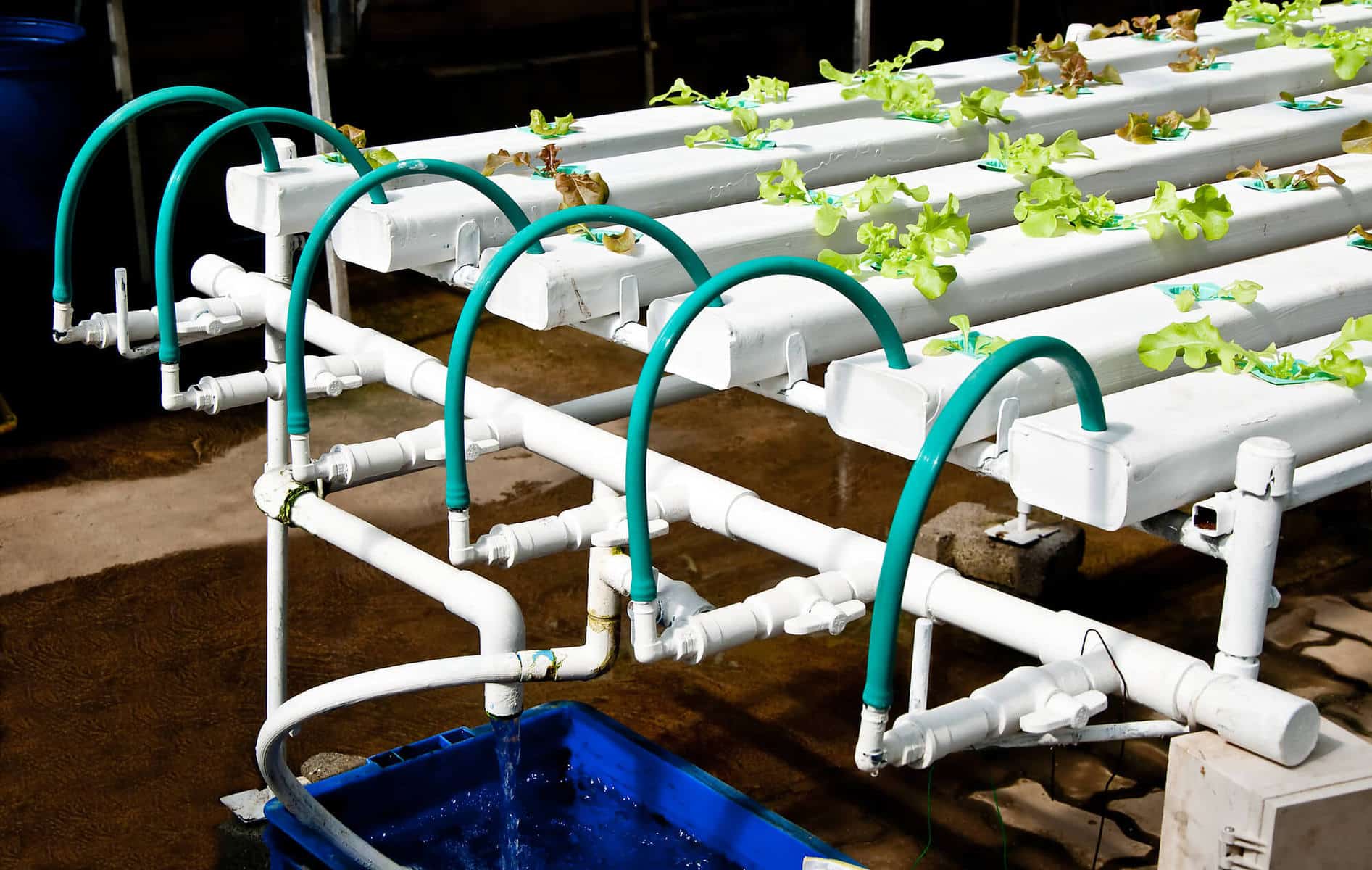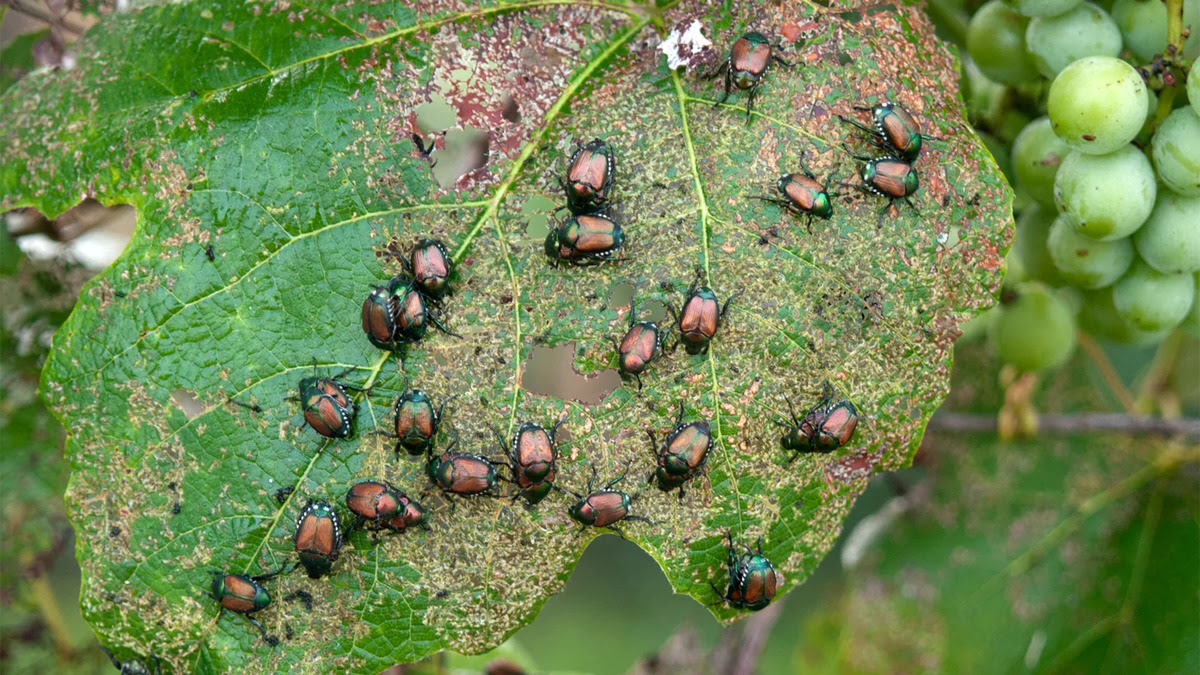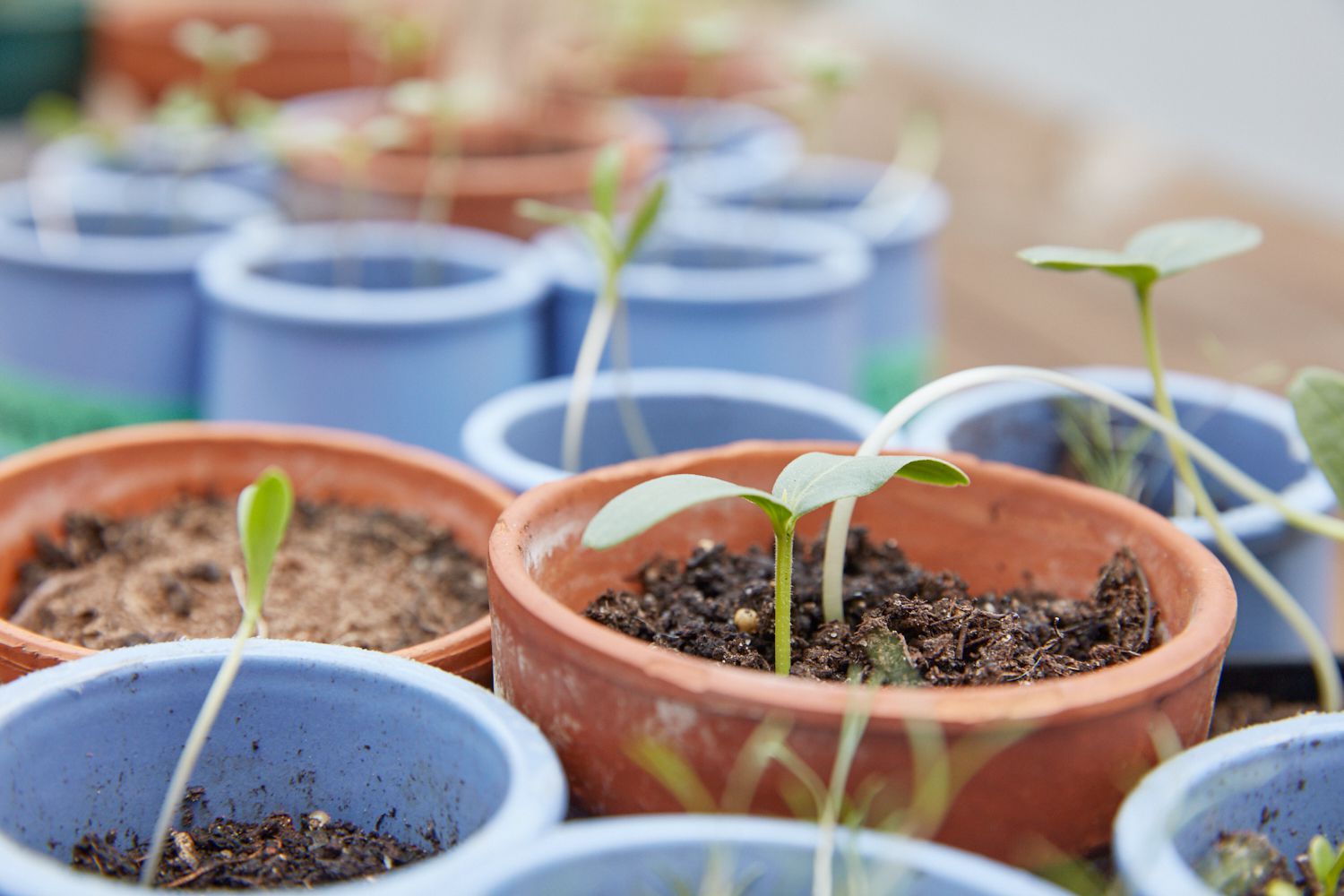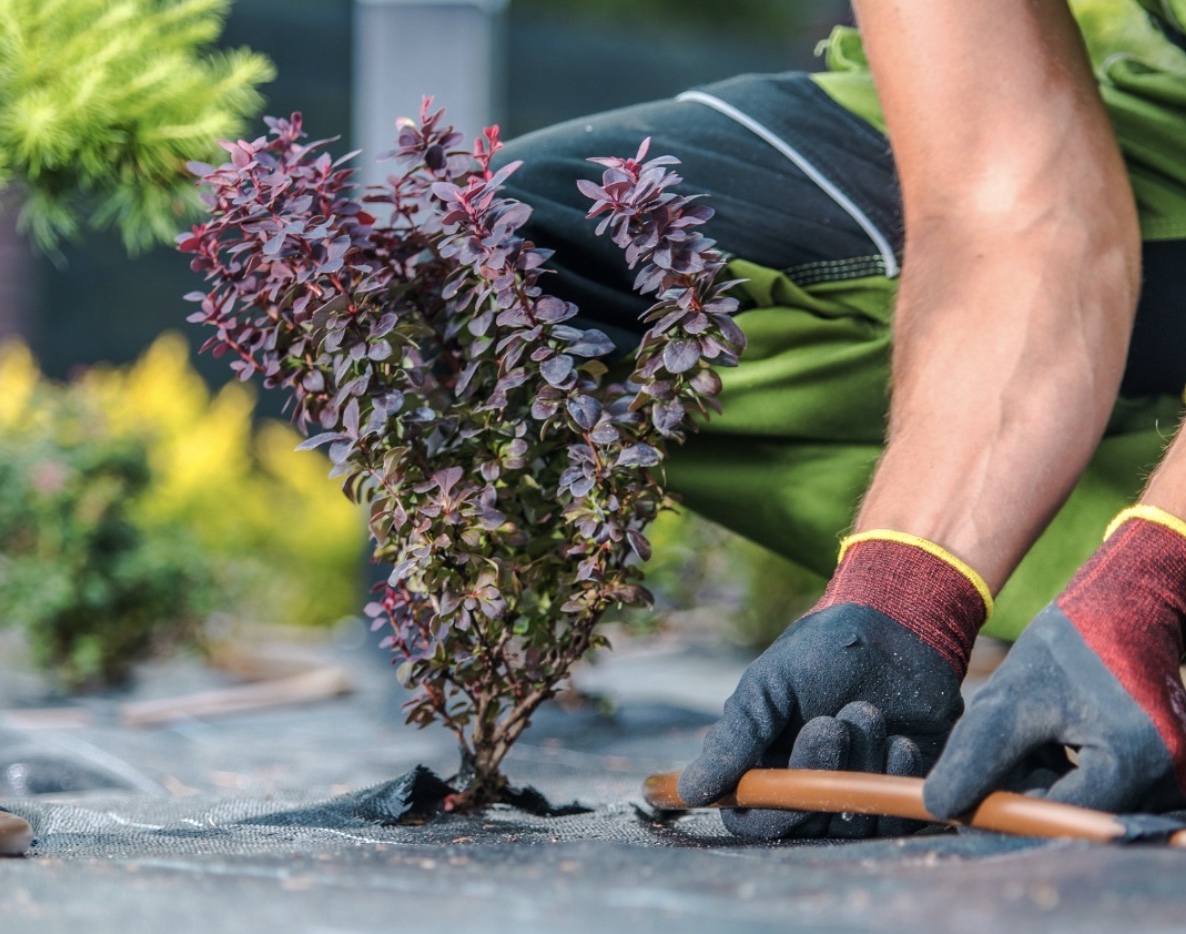Home>Gardening Tips and Tricks>Problem Solving>How To Prevent Mold In Hydroponics


Problem Solving
How To Prevent Mold In Hydroponics
Modified: January 22, 2024
Learn effective problem solving techniques to prevent mold in hydroponics and ensure a healthy growing environment.
(Many of the links in this article redirect to a specific reviewed product. Your purchase of these products through affiliate links helps to generate commission for Chicagolandgardening.com, at no extra cost. Learn more)
Table of Contents
- Introduction
- Understanding Mold in Hydroponics
- Common Causes of Mold in Hydroponics Systems
- Importance of Preventing Mold in Hydroponics Systems
- Effective Ways to Prevent Mold in Hydroponics
- Maintain Proper Air Circulation
- Control Humidity Levels
- Maintain Cleanliness in the Hydroponics System
- Use Appropriate Growing Media
- Monitor and Control Temperature Levels
- Implement Proper Nutrient Solution Management
- Inspect and Quarantine New Plants
- Conclusion
Introduction
Welcome to the world of hydroponics, a method of growing plants without soil. This innovative technique has gained popularity due to its numerous benefits, including water and space efficiency, faster growth rates, and higher crop yields. However, like any form of agriculture, hydroponic systems are susceptible to certain challenges, one of the most common being the growth of mold.
Mold is a type of fungi that thrives in damp and humid environments. It can be detrimental to hydroponic systems as it can hinder plant growth, reduce crop quality, and even lead to plant diseases. As a hydroponic grower, it is crucial to understand the causes of mold growth and implement effective prevention measures to ensure the health and success of your plants.
In this article, we will delve into the various causes of mold in hydroponics systems and explore the importance of preventing its occurrence. We will also provide you with practical tips and strategies to help you effectively combat mold growth and maintain a thriving hydroponic garden.
Whether you are a seasoned hydroponic enthusiast or just starting your journey, this article will serve as a comprehensive guide to preventing mold in your hydroponics system. So, let’s dive in and discover the key steps to ensure mold-free, healthy, and vibrant plants in your hydroponic setup.
Understanding Mold in Hydroponics
Before we delve into the prevention strategies, it’s important to have a clear understanding of mold and how it can affect your hydroponic system. Mold, also known as fungi, is a type of microorganism that thrives in damp and humid environments. It reproduces by producing tiny spores, which can easily spread and colonize on surfaces.
In the context of hydroponics, mold growth can be particularly problematic. Unlike soil-based gardening, where the soil acts as a natural buffer and helps regulate moisture levels, hydroponic systems provide an ideal environment for mold to flourish if not properly managed. The high humidity levels, combined with the constant availability of water and organic matter, create a conducive breeding ground for mold.
Mold growth not only affects the overall health and vigor of your plants, but it can also compromise the quality and yield of your crops. Mold-infected plants can experience stunted growth, yellowing leaves, and reduced nutrient absorption. Furthermore, mold can introduce diseases and pathogens that can spread to other plants in the system, leading to further damage.
Two common types of mold that are frequently encountered in hydroponic systems are powdery mildew and pythium. Powdery mildew is characterized by a white, powdery substance that appears on leaves, stems, and other plant surfaces. It can quickly spread across the plant and hinder photosynthesis, ultimately impacting the plant’s ability to produce food and energy.
Pythium, on the other hand, is a waterborne mold that primarily affects the roots of plants. It causes root rot, leading to wilting, stunted growth, and eventual plant death. Pythium thrives in waterlogged conditions and can rapidly spread throughout the entire root system if not addressed promptly.
Understanding the types of mold prevalent in hydroponic systems and their impact on plants is crucial for developing effective prevention strategies. By being proactive and vigilant in mold prevention, you can safeguard your plants and ensure optimal growth and productivity.
Common Causes of Mold in Hydroponics Systems
Mold growth in hydroponics systems can be attributed to various factors. By understanding these common causes, you can take proactive measures to prevent mold from taking hold in your system. Let’s explore some of the primary culprits:
- High Humidity Levels: One of the leading causes of mold in hydroponics is excessive humidity. When the humidity levels in your grow space are too high, it creates a moist environment that is perfect for mold to thrive. It is crucial to monitor and maintain proper humidity levels, ideally between 50% and 60%, to prevent mold growth.
- Poor Air Circulation: Insufficient air circulation can contribute to the buildup of moisture and stagnant air, both of which promote mold growth. Without proper airflow, condensation can accumulate on plant surfaces and create a breeding ground for mold. Ensuring adequate ventilation in your hydroponics system is essential for preventing mold.
- Waterlogged Growing Media: If the growing medium in your hydroponic system becomes waterlogged or oversaturated, it can create an environment conducive to mold growth. Excessive water retention can lead to oxygen deprivation in the root zone and create an ideal habitat for mold to thrive. It is crucial to choose a well-draining growing medium and adjust watering practices accordingly.
- Contaminated Nutrient Solution: The nutrient solution is an essential component of hydroponics, providing plants with the necessary nutrients for growth. However, if the nutrient solution becomes contaminated with bacteria or fungi, it can introduce mold spores into the system. Regularly monitoring and maintaining the cleanliness of the nutrient solution is vital for preventing mold growth.
- Poor System Hygiene: Maintaining cleanliness and proper hygiene in your hydroponics system is crucial for mold prevention. Dead plant matter, decaying roots, and organic debris can serve as breeding grounds for mold. Regularly clean and sterilize your system components, such as reservoirs, trays, and pipes, to minimize the risk of mold contamination.
- Lack of Plant Inspection: Mold can easily spread from infected plants to neighboring ones if not detected and addressed promptly. Regularly inspecting your plants for any signs of mold, such as powdery substances or discoloration, can help you identify and quarantine affected plants before the mold spreads.
By understanding the common causes of mold in hydroponics systems, you can take proactive steps to address and mitigate these issues. By implementing preventative measures, you can create an environment that discourages mold growth and ensures the health and vitality of your plants.
Importance of Preventing Mold in Hydroponics Systems
The prevention of mold in hydroponics systems is of utmost importance for several reasons. Let’s explore why it is crucial to take proactive measures to combat mold growth:
- Promote Plant Health: Mold-infected plants often exhibit stunted growth, yellowing leaves, and reduced nutrient absorption. By preventing mold growth, you can ensure that your plants remain healthy and vibrant, allowing them to reach their full potential and produce bountiful yields.
- Prevent Crop Contamination: Mold not only affects the individual plants it infects but can also spread rapidly to neighboring plants. This can lead to widespread crop contamination and the loss of an entire crop cycle. By preventing mold growth, you can minimize the risk of crop contamination and safeguard the overall productivity of your hydroponic system.
- Maintain Quality and Aesthetics: Mold-infected plants often develop blemishes and discoloration, compromising their overall quality and aesthetic appeal. By preventing mold growth, you can ensure that your plants remain visually pleasing and maintain their desired quality characteristics, making them more marketable and appealing to consumers.
- Prevent Disease Transmission: Mold can introduce diseases and pathogens into your hydroponic system, which can spread rapidly and lead to further plant damage. By preventing mold growth, you can minimize the risk of disease transmission and maintain a healthy, disease-free environment for your plants.
- Optimize Nutrient Uptake: Mold-infected plants often struggle to absorb nutrients efficiently from the hydroponic solution. This can result in nutrient deficiencies and imbalances, affecting the overall health and productivity of your plants. By preventing mold growth, you can ensure optimal nutrient uptake and promote robust plant growth.
- Reduce Costs: Dealing with mold-related issues can be time-consuming and costly. Mold remediation, crop loss, and the need for frequent system cleaning and sterilization can incur significant expenses. By implementing effective prevention strategies, you can reduce the likelihood of mold-related problems, saving both time and money in the long run.
By understanding the importance of preventing mold in hydroponics systems, you can take the necessary steps to establish a mold-free environment for your plants. By implementing effective prevention strategies, you can enjoy healthy, thriving plants, maximize crop yields, and ensure the long-term success of your hydroponic endeavors.
Effective Ways to Prevent Mold in Hydroponics
Preventing mold growth in your hydroponics system is crucial for maintaining healthy and thriving plants. Fortunately, there are several effective strategies you can implement to minimize the risk of mold. Let’s explore some of the key ways to prevent mold in hydroponics:
- Maintain Proper Air Circulation: Adequate air circulation is essential for preventing mold growth. Use fans or ventilation systems to ensure proper air movement within the grow space. This helps reduce humidity and prevents stagnant air, creating an environment less favorable for mold.
- Control Humidity Levels: Monitor and maintain appropriate humidity levels in your hydroponics system. Invest in a dehumidifier to control excess moisture, especially in enclosed spaces or during humid weather conditions. Aim for a humidity range of 50% to 60% to discourage mold growth.
- Maintain Cleanliness in the Hydroponics System: Regularly clean and sterilize the components of your hydroponic system to prevent the accumulation of organic matter. Clean out and disinfect reservoirs, trays, pipes, and other system parts to eliminate potential breeding grounds for mold.
- Use Appropriate Growing Media: Choose a growing medium that promotes good drainage and prevents excess moisture retention. Avoid organic materials that can decompose and become a breeding ground for mold. Consider using inert media like rockwool, perlite, or clay pellets, which discourage mold growth.
- Monitor and Control Temperature Levels: Mold thrives in warm temperatures, so it is crucial to maintain proper temperature control in your hydroponics system. Keep the temperature within the ideal range for your specific plants and monitor for any fluctuations that could create a favorable environment for mold.
- Implement Proper Nutrient Solution Management: Keep a close eye on your nutrient solution and ensure it remains clean and free from contamination. Regularly monitor and adjust the nutrient solution’s pH and EC levels to maintain optimal growing conditions and prevent the buildup of organic matter that can lead to mold growth.
- Inspect and Quarantine New Plants: Before introducing new plants into your hydroponic system, thoroughly inspect them for any signs of mold or disease. Isolate new plants in a separate quarantine area for a brief period to monitor them for any potential mold issues before introducing them into your main setup.
By implementing these effective ways to prevent mold in your hydroponics system, you can create a clean, healthy, and mold-free environment for your plants. Regular maintenance, proper airflow, cleanliness, and vigilance are key to successfully keeping mold at bay and ensuring the overall success of your hydroponic garden.
Maintain Proper Air Circulation
Proper air circulation is crucial in preventing mold growth in your hydroponics system. Good air movement helps reduce humidity levels, prevent stagnant air, and create an environment that is less favorable for mold development. Here are some effective ways to maintain proper air circulation:
- Use Fans: Install fans in your grow space to ensure air circulation. Oscillating fans are particularly effective as they provide consistent airflow, preventing moisture from settling on plant surfaces. Position the fans strategically to create a gentle breeze that circulates throughout the entire system.
- Consider Ventilation Systems: In addition to fans, consider installing a ventilation system in your grow area. Ventilation systems help exchange stale air with fresh air from outside, reducing humidity levels and promoting air movement. It is especially important in enclosed or tightly sealed grow rooms to prevent the buildup of excess moisture.
- Ensure Proper Vent Placement: If using a ventilation system, ensure that the vents are placed strategically to facilitate the movement of air. Ventilation vents should be positioned both near the top and bottom of the grow space to create a continuous flow of air throughout the entire system.
- Space Plants Properly: Proper plant spacing is important to allow air to circulate freely around each plant. Overcrowding can inhibit airflow and create pockets of stagnant air, increasing the risk of mold growth. Follow recommended spacing guidelines for each plant variety to ensure adequate air circulation.
- Prune and Trim Plants: Regular pruning and trimming of your plants help enhance air circulation within the canopy. Remove any overcrowded or dense foliage that may impede airflow and create areas of high humidity. This promotes better ventilation and reduces the risk of mold development.
- Monitor Airflow: Regularly monitor air circulation within your hydroponics system. Observe the movement of leaves and any areas where there may be stagnant air. Make adjustments to fans or ventilation systems as needed to ensure proper airflow reaches all parts of the plants.
By maintaining proper air circulation in your hydroponics system, you can effectively reduce humidity levels, prevent stagnant air, and create an environment that is less conducive to mold growth. Incorporating fans, ventilation systems, and strategic plant management will help you achieve optimal air movement and promote healthy plant growth.
Control Humidity Levels
Controlling humidity levels is essential for preventing mold growth in your hydroponics system. Excess moisture in the air creates a favorable environment for mold to thrive. By implementing effective strategies to control humidity, you can minimize the risk of mold development. Here’s how you can control humidity levels:
- Use a Dehumidifier: Investing in a dehumidifier is an effective way to regulate humidity levels in your grow space. Dehumidifiers remove excess moisture from the air, helping to maintain optimal humidity levels. Set the dehumidifier to the recommended humidity range of 50% to 60% for most plants to discourage mold growth.
- Seal Gaps and Cracks: Inspect your grow space for any gaps or cracks that allow outside air to enter or moist air to escape. Seal any openings to prevent the ingress of humid air from outside and maintain stable humidity levels within your hydroponics system.
- Install Humidistats: Humidistats are devices that measure and control humidity levels. Place humidistats in different areas of your grow space to monitor humidity levels accurately. This will allow you to make informed adjustments to your dehumidifier or ventilation system as needed.
- Optimize Ventilation: Proper ventilation plays a key role in controlling humidity. Ensure that your ventilation system is adequately sized and functioning efficiently. The exchange of fresh air from outside with stale air from within helps reduce humidity levels and maintain optimal airflow.
- Use Humidity Packs: Humidity packs or desiccant bags can be placed strategically around your grow space to absorb excess moisture. These packs are useful in managing humidity levels, especially in areas where it’s challenging to maintain stable humidity via dehumidifiers or ventilation alone.
- Monitor Watering Practices: Overwatering plants can lead to increased humidity in your hydroponic system. Be mindful of your watering practices and avoid saturating the growing medium excessively. Allow the top layer of the growing medium to dry out slightly between watering cycles to help control humidity levels.
- Use Air Conditioners: Air conditioners can help control both temperature and humidity levels in your grow space. They cool the air while simultaneously extracting excess moisture, promoting a more balanced and controlled environment for your plants.
By effectively controlling humidity levels in your hydroponics system, you can create a less favorable environment for mold growth. Consistent monitoring, the use of dehumidifiers, proper ventilation, and appropriate watering practices will help you maintain optimal humidity levels and ensure the health and success of your hydroponic garden.
Maintain Cleanliness in the Hydroponics System
Maintaining cleanliness in your hydroponics system is essential for preventing mold growth. A clean environment minimizes the presence of organic matter, which can serve as a breeding ground for mold. By implementing proper cleaning and sterilization practices, you can greatly reduce the risk of mold development. Here’s how to maintain cleanliness in your hydroponics system:
- Regularly Clean and Sterilize Components: Perform routine cleaning of your hydroponic system’s components to remove any organic debris or buildup. Clean and sterilize reservoirs, trays, pipes, and other system parts with a mild bleach solution or a hydroponic-specific cleaning agent. This eliminates potential food sources for mold.
- Remove Dead Plant Matter: Dead plant matter, decaying roots, and fallen leaves can contribute to mold growth. Regularly inspect your plants and remove any dead or decaying material from the grow beds or growing medium. This helps prevent the accumulation of organic matter that can foster mold growth.
- Clean and Disinfect Tools: Use clean and disinfected tools when working with your hydroponics system. This includes scissors, pruning shears, and any other tools that come into contact with your plants. Cleaning your tools after each use prevents the spread of mold and other pathogens between plants.
- Practice Proper Hygiene: Practicing good hygiene as a grower is vital in preventing mold growth. Wash your hands thoroughly before working with your plants to minimize the transfer of contaminants. Use disposable gloves when necessary and change them regularly to prevent cross-contamination.
- Implement a Preventative Maintenance Schedule: Establish a regular preventative maintenance schedule for your hydroponic system. This includes periodic cleaning, inspection, and maintenance of all system components. Stick to the schedule diligently to ensure that cleanliness and proper functioning are consistently maintained.
- Monitor and Maintain Water Quality: Regularly test and monitor the quality of your water source. Ensure that it is free from contaminants or impurities that can contribute to mold growth. Using a water filtration system or treating water with appropriate additives can help maintain water quality and reduce the risk of mold contamination.
- Keep Workspaces Clean: Maintaining cleanliness extends to the surrounding work areas and the overall grow space. Regularly clean and sanitize work surfaces, floors, and any other areas where organic matter or debris may accumulate. This reduces the possibility of introducing mold spores into the system.
By prioritizing cleanliness in your hydroponics system, you can create an environment that is less favorable for mold growth. Regular cleaning, thorough sterilization, and good hygiene practices will help reduce the risk of mold contamination, ensuring the overall health and success of your plants.
Use Appropriate Growing Media
The choice of growing media is crucial in preventing mold growth in your hydroponics system. Using an appropriate growing medium can help promote proper drainage and discourage the retention of excess moisture, which can lead to mold development. Here are some factors to consider when selecting the right growing media:
- Drainage Capability: Opt for a growing medium that provides excellent drainage. Well-draining media allow excess water to flow through, preventing waterlogged conditions that are conducive to mold growth. Avoid media that compact easily, as they tend to retain water and create an environment favorable for mold.
- Inert or Sterile: Choose an inert or sterile growing medium that is free from pathogens, pests, and mold spores. Materials like rockwool, perlite, clay pellets, or coco coir that has been properly processed and treated are excellent options. These media don’t break down easily and discourage the development of mold.
- Particle Size: Consider the particle size of the growing medium. Finer particles can retain more moisture and are more prone to compaction, increasing the risk of mold growth. Coarser particles promote better drainage and airflow, reducing the likelihood of mold development.
- Absorption and Retention: Evaluate the water absorption and retention properties of the growing medium. Ideally, it should strike a balance between holding adequate moisture for the plants’ needs while allowing excess water to drain away. The goal is to keep the growing medium consistently moist but not overly saturated.
- Quality and Reusability: Consider the quality and reusability of the growing medium. High-quality media tend to have fewer impurities and are less likely to harbor mold or other pathogens. Reusable media can be sterilized between crop cycles, minimizing the risk of residual mold contamination.
- Sterilization or Pasteurization: If using organic growing media like coco coir or peat moss, consider sterilizing or pasteurizing them before use. This process helps eliminate any potential mold spores or pathogens that may be present, reducing the risk of introducing mold into your hydroponic system.
By selecting an appropriate growing medium that promotes good drainage and discourages excess moisture retention, you can significantly reduce the risk of mold growth in your hydroponics system. Proper drainage and the use of inert or sterile media play a vital role in maintaining a healthy and mold-free environment for your plants.
Monitor and Control Temperature Levels
Monitoring and controlling temperature levels is essential in preventing mold growth in your hydroponics system. Mold tends to thrive in warm and humid environments. By maintaining optimal temperature conditions, you can create an environment that is less conducive to mold development. Here are some key strategies for monitoring and controlling temperature levels:
- Optimal Temperature Ranges: Different plant varieties have specific temperature requirements. Research the ideal temperature ranges for your particular plants and aim to maintain them consistently. Keeping the temperature within the recommended range helps prevent conditions that encourage mold growth.
- Use Temperature Gauges: Install temperature gauges in various locations within your grow space to monitor temperature levels accurately. This allows you to identify any fluctuations and make necessary adjustments promptly.
- Air Conditioning or Cooling Systems: Consider using air conditioning or cooling systems to regulate temperature. In warmer climates or during hot seasons, cooling the grow space can help maintain optimal temperatures. Ensure the cooling system is properly sized for your setup and functions efficiently.
- Insulate Grow Space: Proper insulation of your grow space helps maintain consistent temperatures. Insulate walls, ceilings, and floors, as well as any areas that may allow heat to escape. This not only helps control temperature but also reduces energy consumption and ensures greater temperature stability.
- Ventilate During Hot Periods: During hotter periods, increase ventilation to expel excessive heat and maintain a comfortable temperature range. Use fans or ventilation systems to circulate and exhaust hot air, preventing heat buildup that could lead to mold growth.
- Shade Structures: Install shade structures or curtains to regulate the amount of direct sunlight reaching your plants. Excessive heat from intense sunlight can raise temperature levels and create conditions favorable for mold growth. Shading your grow space helps reduce heat stress and maintain optimal temperatures.
- Monitor Environmental Factors: Besides temperature, monitor other environmental factors that can impact temperature levels, such as lighting and equipment heat output. Some lighting systems and equipment generate heat, which can raise temperatures in your grow space. Adjust and optimize these factors to maintain the desired temperature range.
By diligently monitoring and controlling temperature levels in your hydroponics system, you can create an environment that minimizes the risk of mold growth. Consistent temperature maintenance helps promote healthy plant growth and reduces the likelihood of mold-related issues.
Implement Proper Nutrient Solution Management
Proper management of the nutrient solution in your hydroponics system is crucial in preventing mold growth. The nutrient solution provides essential nutrients to your plants, but if not properly managed, it can become a breeding ground for mold and other pathogens. Here are some key practices for implementing proper nutrient solution management:
- Monitor and Adjust pH Levels: Regularly monitor the pH levels of your nutrient solution. Most plants thrive in a pH range of 5.5 to 6.5. Fluctuations in pH levels can impact nutrient availability and create imbalances, leading to stress or deficiencies in plants. Use pH testing kits or meters to ensure the pH of your nutrient solution remains within the appropriate range.
- Control Electrical Conductivity (EC): Electrical conductivity measures the concentration of nutrients in your hydroponic solution. Maintain optimal EC levels by regularly measuring and adjusting nutrient concentrations. EC values vary among plant varieties, so research the ideal range for your specific crops and adjust nutrient concentrations accordingly.
- Monitor Water Quality: The quality of the water you use to prepare your nutrient solution is crucial. Test the water for any impurities, such as excessive minerals, chlorine, or pathogens. Filter or treat the water as necessary to ensure it is free from contaminants that could compromise the health of your plants or contribute to mold growth.
- Prevent Contamination: Properly handle and store your nutrient solutions to prevent contamination. Keep containers tightly sealed and clean, and avoid touching the inside of the container or allowing it to come into contact with surfaces that could introduce mold spores or other contaminants.
- Regularly Change and Refresh Nutrient Solution: Refresh your nutrient solution regularly to maintain nutrient balance and discourage the buildup of organic matter. Draining and replacing the solution every two to three weeks helps prevent the accumulation of nutrients that can feed mold growth. Properly dispose of the old solution and thoroughly clean the reservoir before refilling.
- Properly Store Nutrients: Store nutrient solutions and additives properly to maintain their efficacy and prevent contamination. Follow manufacturer instructions for storage and avoid exposing them to direct sunlight or extreme temperature fluctuations.
- Maintain Proper Oxygenation: Ensure that your nutrient solution is well-oxygenated. Oxygen-rich solutions discourage the growth of anaerobic microorganisms, including mold. Use air stones, air pumps, or oxygenators to maintain adequate oxygen levels in the nutrient solution.
By implementing proper nutrient solution management, you can create an environment that discourages the growth of mold and promotes healthy plant growth. Regular monitoring, adjusting pH and EC levels, preventing contamination, and refreshing the nutrient solution will help ensure optimal nutrient uptake and minimize the risk of mold-related issues.
Inspect and Quarantine New Plants
When introducing new plants into your hydroponics system, it is essential to inspect them thoroughly and implement a quarantine period. This practice allows you to identify any potential signs of mold or other diseases before they can spread to your existing plants. Here’s how you can effectively inspect and quarantine new plants:
- Visual Inspection: Carefully examine the new plants for any signs of mold or disease. Look for powdery substances, discoloration, spots, or any other abnormal growth. Check the leaves, stems, and root systems to identify any potential issues.
- Isolation Area: Set up a separate quarantine area for new plants to prevent any potential spread of mold or diseases to your main hydroponics system. This can be a clean and controlled environment, isolated from your existing plants, to closely monitor and address any issues that arise.
- Observe for Symptoms: During the quarantine period, carefully observe the new plants for any signs of mold or other diseases. Monitor their overall health, growth rate, leaf color, and any changes that may indicate the presence of an issue.
- Address Issues Promptly: If you notice any signs of mold growth or diseases during the quarantine period, take immediate action to address the issue. Remove and isolate affected plants to prevent the spread of mold to healthy plants. Treat or dispose of the affected plants accordingly.
- Extend Quarantine if Needed: Depending on the potential risks associated with the new plants, you may need to extend the quarantine period. Some plants may exhibit symptoms at a later stage, so it is important to remain vigilant and observe them for an adequate duration before introducing them into the main system.
- Implement Preventive Measures: While in quarantine, take extra precautions to prevent any potential spread of mold. This includes practicing good hygiene, washing hands before handling the new plants, disinfecting any tools used, and avoiding contact between the quarantined plants and your main system until they are deemed safe.
- Consult Experts if Necessary: If you are unsure about the health of the new plants or need assistance in identifying potential issues, consult with experts or horticulturists. They can provide guidance on proper inspection techniques, treatments, and any necessary precautions to take during the quarantine period.
By diligently inspecting and quarantining new plants, you can minimize the risk of introducing mold or diseases into your hydroponic system. This practice allows you to closely monitor and address any issues before they can impact the overall health and vitality of your existing plants.
Conclusion
Mold growth in hydroponics systems can present significant challenges for growers, but with the right knowledge and preventative measures, it can be effectively controlled and minimized. By maintaining proper air circulation, controlling humidity levels, practicing cleanliness, using appropriate growing media, monitoring and controlling temperature levels, implementing proper nutrient solution management, and inspecting and quarantining new plants, you can create a healthy and mold-free environment for your hydroponic garden.
Proper air circulation helps reduce humidity and prevents stagnant air, both of which are conducive to mold growth. Controlling humidity levels is essential to create an environment that discourages mold development. Maintaining cleanliness through regular cleaning and sterilization helps eliminate potential breeding grounds for mold. Choosing appropriate growing media promotes good drainage and discourages excess moisture retention. Monitoring and controlling temperature levels prevent conditions that encourage mold growth. Proper nutrient solution management ensures a balanced environment for healthy plant growth and reduces the risk of mold contamination. Inspecting and quarantining new plants allows you to identify and address any potential mold or disease issues before introducing them into the main hydroponic system.
By incorporating these preventative strategies into your hydroponics practice, you can enjoy mold-free, healthy plants and optimize your crop yields. Regular monitoring, proactive maintenance, and attention to detail are key to preventing mold growth and fostering a successful hydroponic garden.







